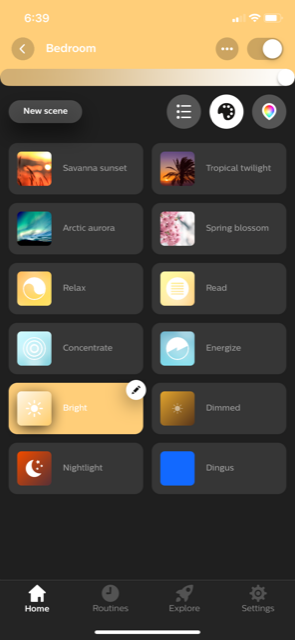Smart home compatibility
Because smart lighting is a smart home luxury, it’s no surprise that smart light bulbs can react to voice commands through multiple home automation systems.
Philips Hue and home automation
Despite the extra step of first setting up the hub, getting the Hue bulbs installed was incredibly easy—it took only five minutes from start to finish. The hub easily connected to our home router for a Wi-Fi connection, and each light bulb connected seamlessly to the Philips Hue app.
Connecting to Google Home and Amazon’s Alexa was also straightforward through each system’s app and the Wi-Fi signal. It took only a couple minutes to set up each device. Once connected, both home automation systems let us dim the lights, change the colors, or turn the light on and off, all with a simple voice command.
The only real difference between the smart home hubs was that Google Home recognized the command “lights,” while Alexa required us to say the specific name of the light bulb in order to control them. That light bulb name is prescribed in the Philips Hue app, depending on the location you assign it in the setup process.
LIFX and home automation
The hardest part of installing the LIFX light bulb was honestly getting the flat-topped bulb out of its chic but very snug-fitting container. After that, getting Wi-Fi connection was easy with the help of the LIFX app. In total, the process took about 12 minutes; the majority of the additional time compared to Philips Hue was spent getting it out of its box.
Connecting to Google Home and Amazon’s Alexa was also very simple, again adding only a couple minutes each. The same features as the Hue bulb’s compatibility applied here: we could dim the lights, switch them on or off, and change their colors all through voice commands.
Google Home was again the easier option in recognizing the specific lights we wanted to control. Amazon’s Alexa required specific names for each light. Luckily, you can change the name of the lights within the LIFX app, so it’s easy to remember light names.







